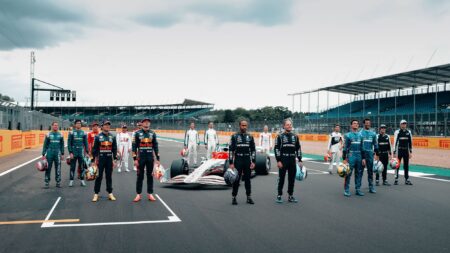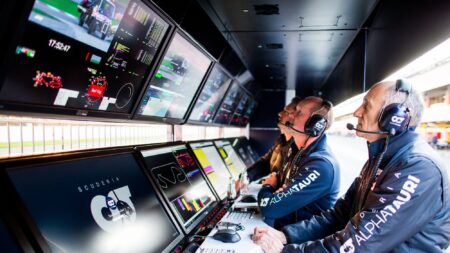“The sentiment was generally positive during the race and then it went quite negative at the end of the race, and the post-race comments were surprisingly negative.”
More detail on viewers’ response was provided by fans wired up to galvanic skin response sensors. These can detect emotional responses from tiny changes in skin conductivity caused by sweat glands.
“Doing the galvanic skin response biometrics is sometimes more interesting, because firstly, you can’t cheat it. But also we have a little bit more of a spread of different types of fans. Yes, they have to be engaged enough to volunteer to do it but aren’t necessarily diehard fans.”
Comments across the internet throughout the weekend ranged from brilliant to borefest but the race and the findings did provide F1 with plenty to think about moving forward.
Symonds says that he isn’t averse to changing the formula for future Sprints but says that further races are needed before F1 makes a decision.
Fan reactions are already being used in other areas. F1 has developed artificial intelligence that combines social media reactions with race and simulation data to come up with more exciting circuit designs.
The sprint qualifying verdict
Despite picking up on post-race disgruntlement, Symonds says that he sees the first race as a success.
We started the project, ranging from trying to provide more entertainment on each of the three days through to having a bit more jeopardy,” he said. “I think that essentially we achieved a lot of the real fundamentals.
“Overall we were pretty happy with it. I look at Lewis’s lap times in the sprint, I fuel correct them. Compared with the Grand Prix he was running about four-tenths quicker in the Sprint, so he was definitely pushing and there was no tyre conserving going on even though you know he wasn’t in a challenging position.
“I think Friday became the most interesting one we’ve had since we started qualifying that day, many years ago. We picked up Friday audience, TV, and social media numbers and Saturday the objective was to make sure we had cars going past spectators lots of times and get them out on the track. That that worked well.”
Changing the sprint qualifying format
Ross Brawn, F1’s managing director, has already said that tweaks to sprint qualifying are planned, with a job list of improvements that will be tested before being implemented.



